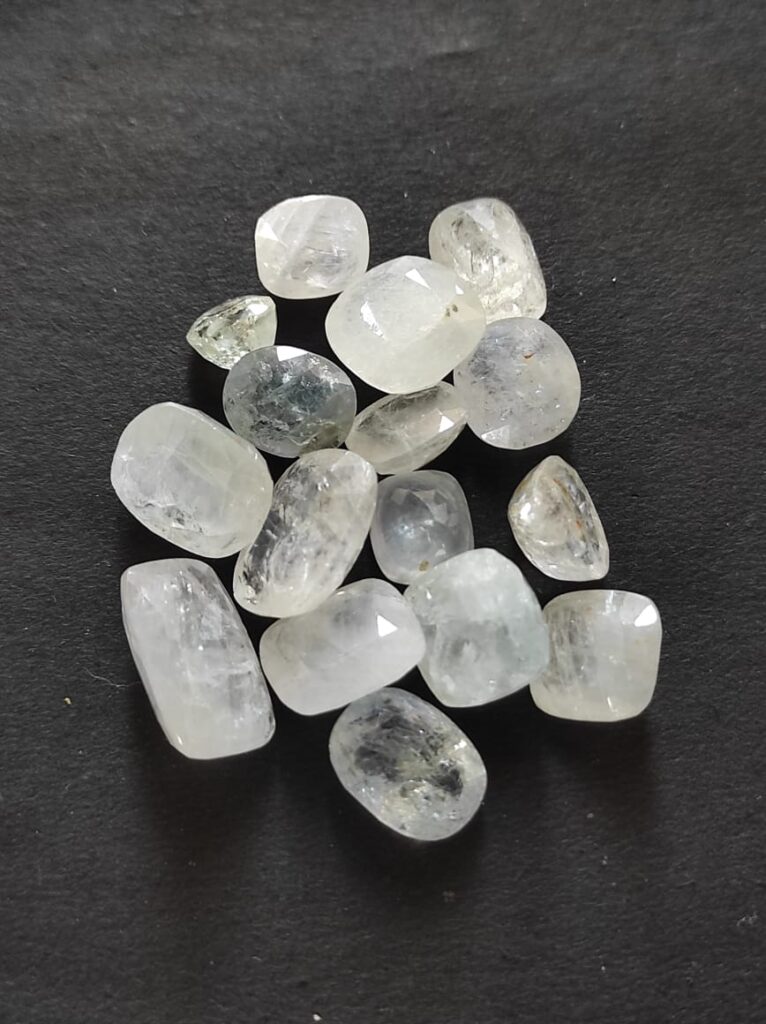When it comes to choosing a gemstone for a special piece of jewelry—whether it’s an engagement ring, a necklace, or earrings—the debate often narrows down to two contenders: diamond and white sapphire. Each stone has its unique charm, but how do you decide which is best for you? Are you a traditionalist who loves the timeless appeal of diamonds, or do you prefer the cost-effective yet elegant white sapphire? Let’s dive into the details and explore their characteristics, costs, and care requirements to help you make an informed decision.
The Timeless Allure of Diamonds
Diamonds have long been synonymous with luxury, elegance, and commitment. They are the hardest known natural material, boasting a perfect 10 on the Mohs scale of hardness. This characteristic not only makes them incredibly durable but also lends them a unique ability to refract light, creating that famous “fire” and “brilliance.”
But what makes diamonds so special? The answer lies in their unique formation process. Diamonds are formed deep within the Earth’s mantle, under intense heat and pressure, and are brought to the surface through volcanic activity. This journey, which takes millions of years, contributes to their rarity and, consequently, their high value.
However, diamonds aren’t just for those who can afford a hefty price tag. They come in a variety of shapes and cuts, allowing for a range of price points. From traditional round cuts to trendy pear or oval shapes, there’s a diamond for every style and budget. But let’s face it: diamonds are still considered a luxury item, and the cost can be a significant barrier for many.
White Sapphire: An Affordable Alternative
White sapphire, on the other hand, offers an appealing alternative for those seeking a more budget-friendly gemstone without compromising on beauty. Although not as hard as diamonds, white sapphire still ranks a respectable 9 on the Mohs scale, making it durable enough for everyday wear.
What’s interesting about white sapphires is their origin. Unlike diamonds, which are formed from pure carbon, sapphires are made from aluminum oxide, with trace elements contributing to their color variations. White sapphires are essentially sapphires without the trace elements, resulting in a clear, colorless stone.
From a cost perspective, white sapphires are significantly cheaper than diamonds. This affordability allows for larger stones or more intricate designs without breaking the bank. Additionally, white sapphires have a softer, more subtle brilliance compared to diamonds, offering a unique aesthetic that some find more appealing.
Brilliance and Aesthetics: Diamond or White Sapphire?
When it comes to brilliance and aesthetics, diamonds have the upper hand. Their unique ability to refract light creates a dazzling display of colors, often referred to as “fire.” This brilliance is a significant reason why diamonds are so highly valued in the jewelry industry.
White sapphires, while not as brilliant, offer a softer, more understated sparkle. Some people prefer this subtlety, especially if they find diamonds too flashy. If you’re looking for a gemstone that complements a more subdued style, white sapphire could be the perfect choice.
Durability and Care: What to Consider
Durability is a crucial factor when choosing a gemstone, especially for jewelry worn daily. As mentioned earlier, diamonds are the hardest natural material, making them highly resistant to scratches and damage. This durability is why diamonds are the preferred choice for engagement rings and other everyday jewelry.
White sapphires, while not as hard as diamonds, are still quite durable. However, they may require more careful handling and maintenance to avoid scratches or other damage. Regular cleaning and professional check-ups are recommended to keep your white sapphire jewelry looking its best.
Cost and Value: Which Offers More Bang for Your Buck?
Cost is often a significant factor in choosing between diamonds and white sapphires. Diamonds are generally more expensive, with prices varying based on factors like cut, color, clarity, and carat weight. This higher cost can make diamonds inaccessible to some, especially when considering larger stones or more intricate designs.
Diamond vs white sapphire, on the other hand, offer a more budget-friendly option. They are typically less expensive, allowing for larger stones or more elaborate settings without the high price tag. If you’re looking for a gemstone that offers value for money, white sapphires are an excellent choice.
Conclusion: Which Gemstone is Right for You?
So, diamond or white sapphire? The answer depends on your budget, style preferences, and how you plan to use the gemstone. If you value tradition, durability, and unparalleled brilliance, lab created diamonds are the way to go. However, if you’re seeking a more affordable option with a unique aesthetic and enough durability for everyday wear, white sapphires are a fantastic alternative.
Ultimately, the choice is yours. Consider what matters most to you—whether it’s cost, brilliance, or durability—and choose the gemstone that aligns with your values and preferences. Whatever you decide, both diamonds and white sapphires offer beautiful options that can make any piece of jewelry truly special.




